4 Colors, 4 Colors on Each piece, Ratio of Color Frequencies is 2:2:2:2, One-sided
There are 318 one-sided pieces. Since 318=6*53 and 53 is prime a 6x53 rectangle is the only interesting one.

4 Colors, 4 Colors on Each piece, Ratio of Color Frequencies is 2:2:2:2, Two-sided
With the 171 two-sided pieces a 9x19 rectangle is shown.
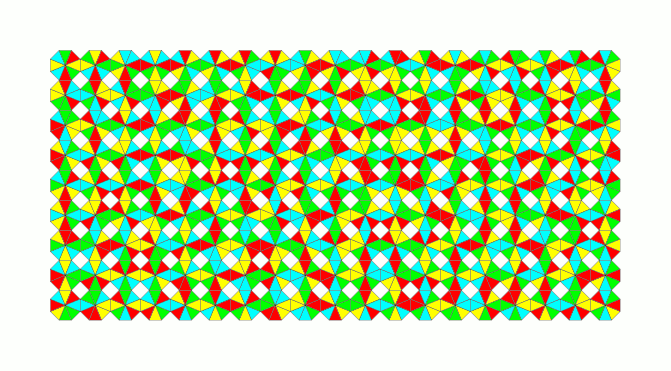
4 Colors, 4 Colors on Each piece, Ratio of Color Frequencies is 1:2:2:3, One-sided
There are 2520 one-sided pieces and I tried to construct rectangles of size 10x252 and 42x60. Simple backtracking doesn't work. So I divided the rectangles into stripes of size 10x63 and 42x15, respectively. Then one stripe was solved by pieces using only one piece out of each of the 630 color shift classes. What's a color shift class? Four pieces are elements of the same color shift class if their colors can be transformed by one or more rotational shifts of colors (1,2,3,4 is replaced by 2,3,4,1). We get the remaining three stripes by color shifts if border matches were taken into account. Here are the the four stripes for the 10x252 rectangle.
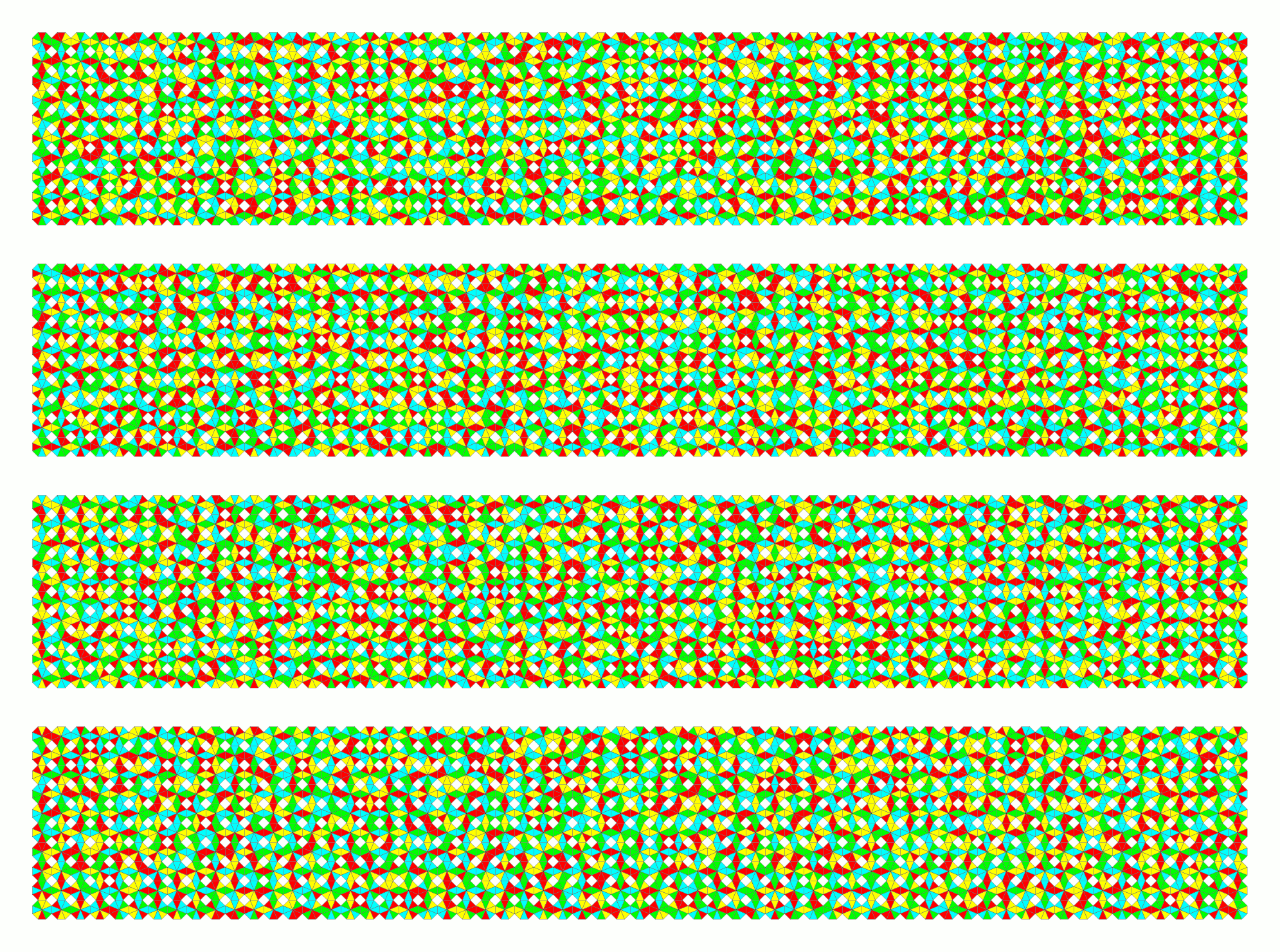
The parts of the 42x15 rectangle are already joined.
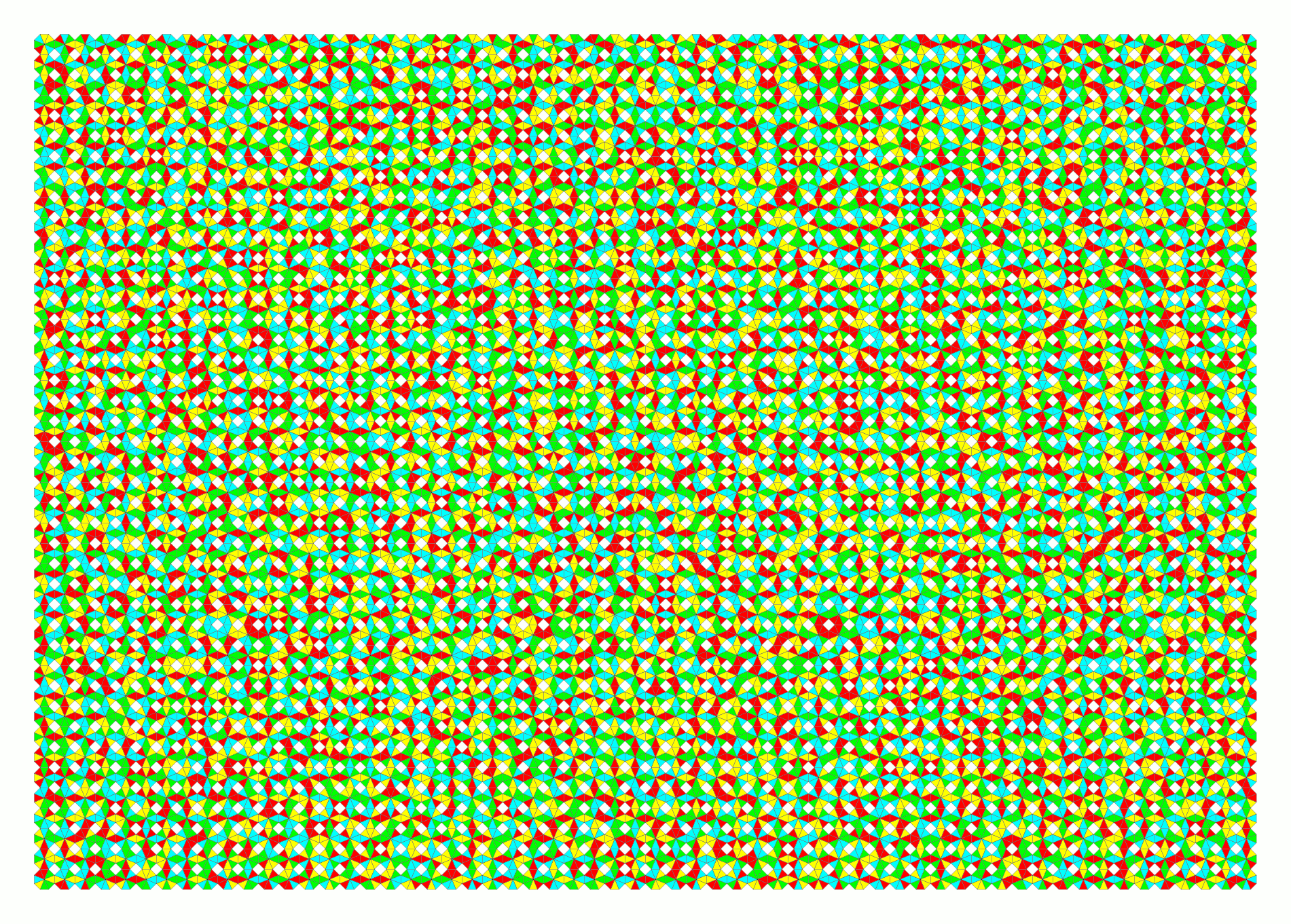
4 Colors, 4 Colors on Each piece, Ratio of Color Frequencies is 1:2:2:3, Two-sided
With 1296 two-sided pieces a 36x36 square can be made. Furthermore I constructed a 24x54 rectangle combining four stripes of size 6x54. The square consists of four 9x36 rectangles. As with the one-sided pieces I used the color shift method. Here are the four parts.
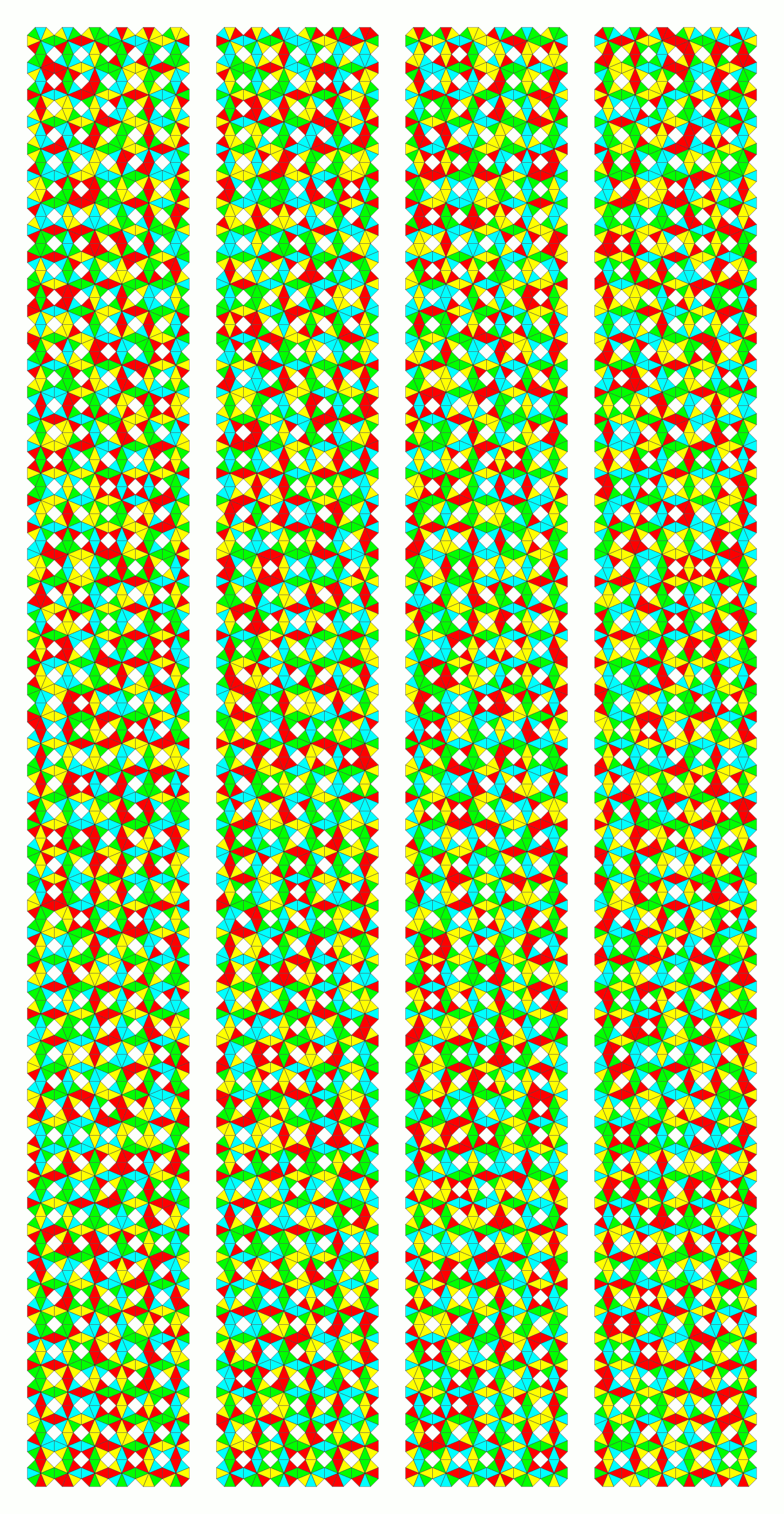
The parts of the square are already joined.
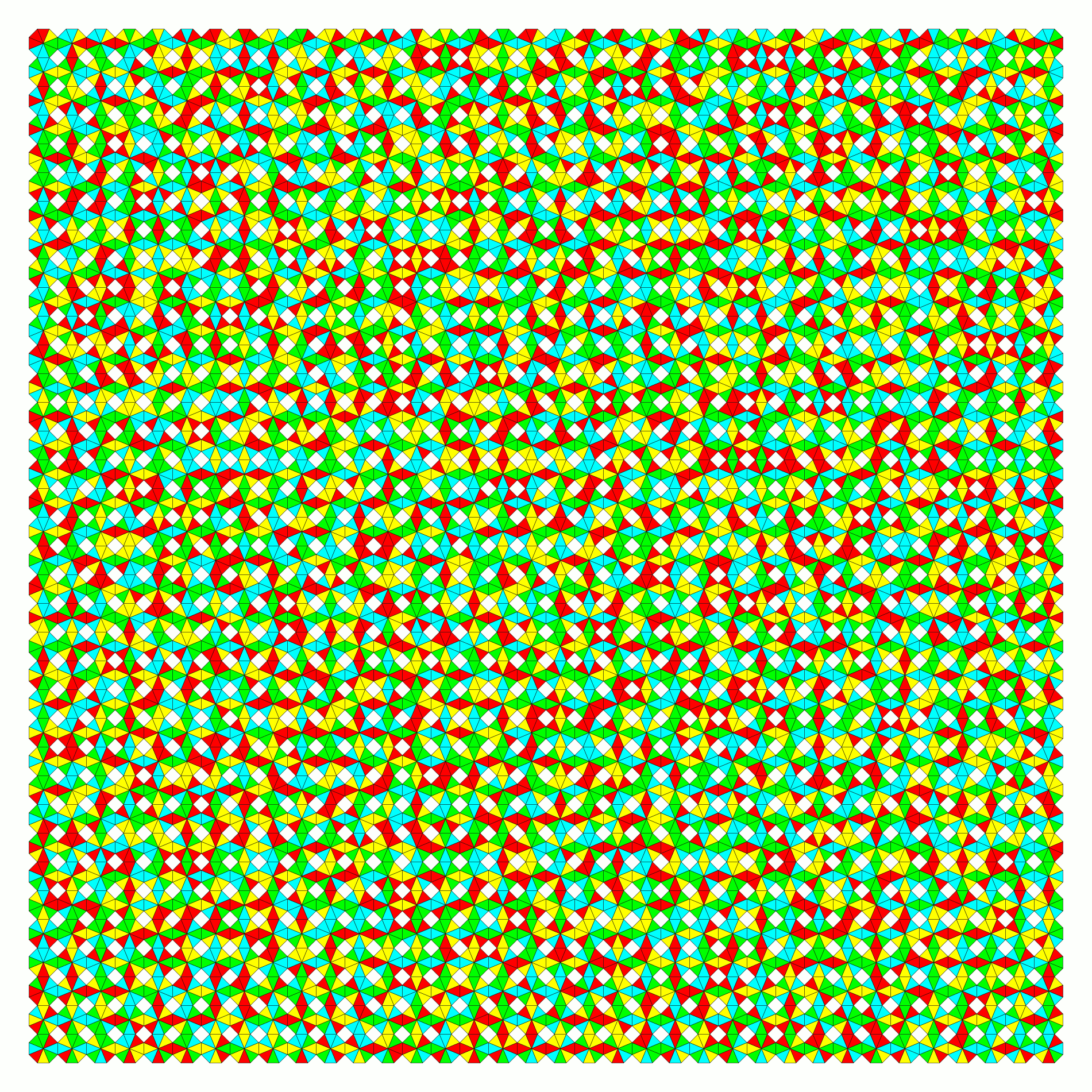
Back
Home






